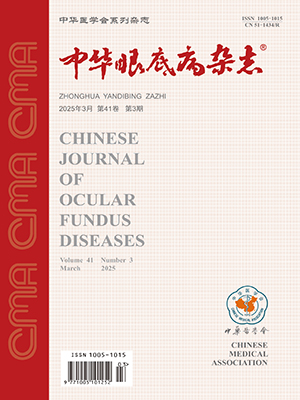Objective To determine the correlation between central macular thickness (CMT) and the visual function in patients iwht macular edema (ME). Methods The clinical data of 42 eyes of 40 patients with ME which were examined by optical coherence tomography (OCT) and microperimetry (MP-1) were retrospectively analyzed. In 40 patients (42 eyes), diabetic ME (DME) was in 27 eyes,branch retinal vein occlusion was in 11eyes, and central retinal vein occlusion was in 4 eyes. All of the eyes had undergone OCT,MP-1 and best-corrected visual acuity (BCVA) test. Central macular thickness (CMT) was measured by fast macular scans using OCT. Retinal sensitivity (MS) and fixation patterns were evaluated by Mp-1. The position was chosen :2 disc diameters (DD) temporal to the disc and one third of a DD inferior to the centre of the disc. Results The correlation between CMT and BCVA is not significant (r=-0.429,P=0.069) as well as the correlation between CMT and MS (r=-0.433,P=0.058). The difference of CMT between the unstable and stable group was significant (F=3.262, P=0.039). The difference of CMT between the central fixation group and preferred retinal locus (PRL) group was significant (F=3.173, P=0.044). Conclusions BCVA and MS have no significant correlation with CMT. When CMT increases, the fixation stability decreases, fixation location.changes, and PRL occurs.
Citation: 王雯秋,王泓,张磊,姜媛,钱锦,王卫峻,汪枫桦,吴颖,孙晓东. Correlation between the central macular thickness and the visual function in patients with macular edema. Chinese Journal of Ocular Fundus Diseases, 2009, 25(3): 182-184. doi: Copy
Copyright © the editorial department of Chinese Journal of Ocular Fundus Diseases of West China Medical Publisher. All rights reserved




